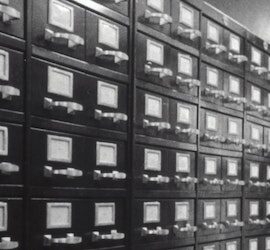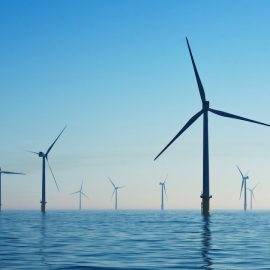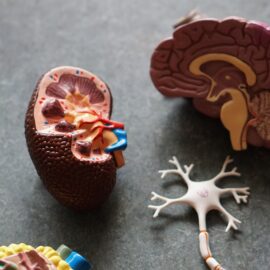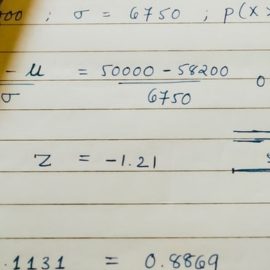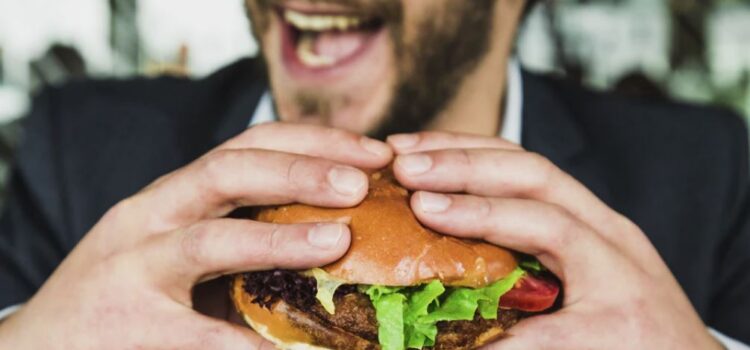
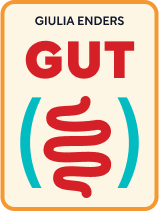
This article is an excerpt from the Shortform book guide to "Gut" by Giulia Enders. Shortform has the world's best summaries and analyses of books you should be reading.
Like this article? Sign up for a free trial here .
What are the seven stages of digestion? How is food processed through the body?
Digesting food is a complex process that requires all of the organs in the gut to work together and perform their precise functions. In her book Gut, Giulia Enders describes the seven stages that food goes through to convert into nutrients you can absorb.
Keep reading to learn about the process of digestion from start to finish.
The Stages of Digestion
The three nutritional building blocks (carbohydrates, fats, and amino acids) play crucial roles in storing energy, powering cells, and building bodily structures. However, to receive these benefits, your digestive system must first break down food into molecules that you can absorb.
In this section, we’ll describe the seven stages of digestion, detailing the role of each organ.
1. The Mouth
We tend to think the gut begins in the abdomen. However, Enders maintains that the mouth is the first step of the digestion process. When we eat food, the mouth begins to break it down by releasing saliva and chewing. The mouth also protects us from unwelcome bacteria that we encounter in everyday life. These functions take place in two places: the salivary glands and the tonsils.
2. The Esophagus
When we swallow food, it enters our esophagus. The esophagus transports the food from the mouth to the stomach. Enders explains that the esophagus is ringed by muscles that propel the food downward by constricting and then relaxing. This results in a wave-like motion called “propulsive peristalsis.” This motion isn’t dependent on gravity. In other words, food makes it to your stomach even when you’re upside down!
(Shortform note: Propulsive peristalsis is one of two movements of the gut’s smooth muscle—a type of muscle that we don’t consciously control. The other motion is “segmentation contractions,” which occur primarily in the small intestine. Instead of the sequential contract-relax process of peristalsis, segmentation contractions happen intermittently, and they serve to mix up the food, not move it forward.)
3. The Stomach
As we’ve mentioned, your mouth starts to break down food by chewing it. The stomach’s job is to break down the food even more, making it easier to digest.
There are two parts to this digestion stage. First, the stomach produces acid. According to Enders, it begins to do so before the food is even in the esophagus. Stomach acid helps heat the chewed-up food and break its molecular bonds.
When the stomach receives food from the esophagus, it begins to alternately contract and relax. This creates what Enders describes as a swinging motion, which churns the food together with the stomach acid, further breaking it down. According to Enders, this churning process usually takes around 2 hours. It takes less time for liquids and simple carbs, but longer for proteins and fats.
4. The Small Intestine
When the stomach is done with your food, it no longer resembles what you put in your mouth. Instead, it’s a pulp of nutritious carbohydrates, fats, and proteins called chyme.
The small intestine’s job is to absorb the food particles found in chyme into the bloodstream. From there, as we’ve already noted, the particles travel throughout the body, providing fuel for our cells and building important structures.
There are three important parts to the small intestine’s job: breakdown, absorption, and cleanup. Let’s look at each in turn.
The Role of the Liver and the Pancreas
Enders briefly mentions the liver and the pancreas several times during the her discussion of the digestion stages in Gut. But she focuses less on these organs and more on the organs that food travels through (including the stomach, small intestine, and large intestine). Still, the liver and the pancreas are crucial parts of the digestive system. Here are several of their most important functions.
The liver regulates your blood levels, making sure that you have the right balance of nutrients. It also produces cholesterol, stores nutrients such as iron, and breaks down medicine into a usable form.
Furthermore, the liver filters harmful substances from your blood. Enders mentions this in passing, but she doesn’t specify how the process works. Research shows that the liver filters blood by passing it through channels lined with immune cells. These immune cells attack toxins and harmful substances, causing the liver to excrete them in a substance called bile. Bile then goes through the rest of the gut and ends up in your poop.
The pancreas produces three crucial enzymes: lipase, protease, and amylase, which break down fats, proteins, and carbs respectively. It also produces hormones such as insulin, which, as we mentioned earlier, regulates your blood sugar levels.
5. The Large Intestine
According to Enders, the large intestine is in charge of breaking down and absorbing nutrients and water left over by the small intestine. It slowly absorbs water and electrolytes from the chyme, ensuring that we don’t lose too many fluids when we poop.
Enders explains that the large intestine houses the vast majority of the bacteria in your gut. These bacteria use enzymes to squeeze the last nutrients out of the chyme. The walls of the large intestine then absorb the nutrients into the bloodstream.
6. The Appendix
The appendix attaches to the large intestine on the lower right side of your abdomen. Enders maintains that, contrary to popular belief, the appendix does have a use as the sixth stage of digestion. According to Enders, the appendix consists of the same tissue that makes up your tonsils. Researchers theorize that, like the tonsils, the appendix captures and kills bad bacteria.
Researchers also suggest that the appendix repopulates our large intestine with helpful bacteria. When we have diarrhea, we poop out a lot of our gut bacteria. To compensate, Enders explains, the appendix releases helpful bacteria into the large intestine. This restores a healthy balance and prevents harmful invaders from settling in the gut.
7. Pooping
Even after the large intestine’s job is done, there are some substances that your body can’t or won’t absorb. These substances appear in your poop, the last stage of digestion. We generally think of pooping as a simple, mundane act. However, Enders maintains that it’s a fascinating and complex process.
Enders explains that pooping works through a negotiation between our internal and external sphincters: muscles that prevent the contents of our guts from leaking. We consciously control the external sphincter, but not the internal one. In other words, the internal sphincter can open and close without our brains telling it to.
When we need to poop (or fart), Enders continues, the internal sphincter lets out a little bit of liquid (or gas). The external sphincter then sends a message to the brain, telling it that we’re ready to release our bowels. The brain then decides whether to open the external sphincter and let out the poop (or gas) or keep the sphincter closed until later.

———End of Preview———
Like what you just read? Read the rest of the world's best book summary and analysis of Giulia Enders's "Gut" at Shortform .
Here's what you'll find in our full Gut summary :
- How your digestive system works and why it’s important to keep it healthy
- How tiny organisms in your intestines influence your immune system (and possibly your mood)
- What your appendix actually does

